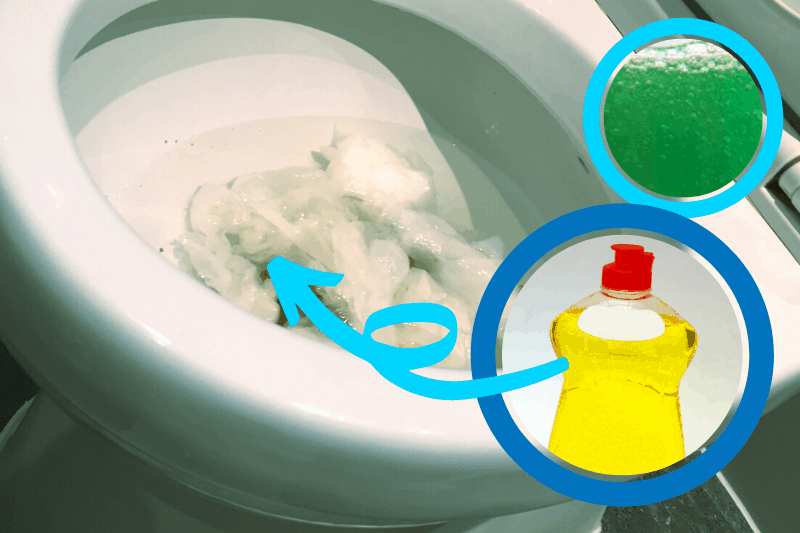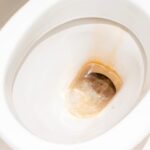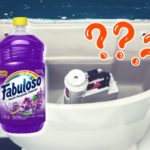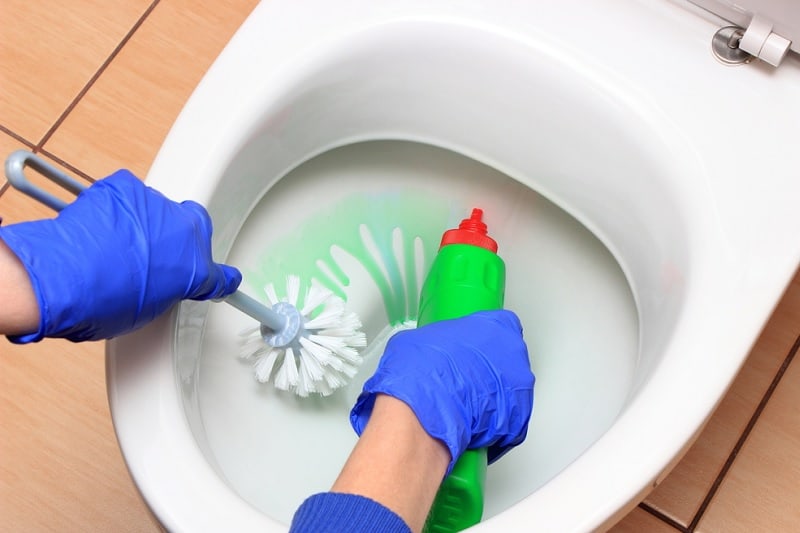A blocked toilet can be an absolute nightmare, and cause problem after problem. It’s one of those inconvenient issues that seem to always come at the worst possible moment.
It is possible to easily unblock a toilet, without a plunger and just using something we all have in our kitchen cupboards.
Unblocking a Toilet with Washing Up Liquid
Unblocking a toilet with washing up liquid doesn’t require the use of a plunger; and so, this is a handy tactic if you are in a rush or in an unfamiliar place where you don’t know the plumbing.
For this method, you will need:
- Washing up liquid
- A bucket
- Bicarbonate of soda
- Vinegar
Step 1 – Pour in Washing Up Liquid
To begin, pour around half a mug’s worth of washing up liquid into the toilet bowl. Make sure to run it around the sides so that a ring forms around the waterline, and criss-cross washing up liquid across the surface of the water too.
Step 2 – Wait, Then Add Hot Water
Leave the washing up liquid in place for around half an hour to dissolve the blockage. Fill the bucket with hot water and pour it into the toilet from waist height. The force of the water falling from this height should help dislodge the blockage.
Step 3 – Leave for 10 Minutes
Leave the toilet again for around ten minutes, and flush. If you are lucky, this will completely remove the blockage and you will be good to go.
Step 4 – Repeat if Necessary
If the blockage hasn’t been cleared completely but you can see the water level starting to drop, repeat the process with the washing up liquid and hot water again, and the blockage should clear.
Step 5 – Add Bicarbonate of Soda and Vinegar
Once you are satisfied that the blockage is no more, put a mug’s worth of bicarbonate of soda and two mugs of vinegar into the toilet bowl. Let this mixture bubble for around half an hour.
This will break up any remaining material. Finish by flushing the toilet one last time to clear away the residue.
Other Methods
If washing up liquid hasn’t worked, or you don’t have enough to hand to deal with the blockage, there are a wealth of other solutions that you can try. These include clingfilm, wire coat hangers and water bottles.
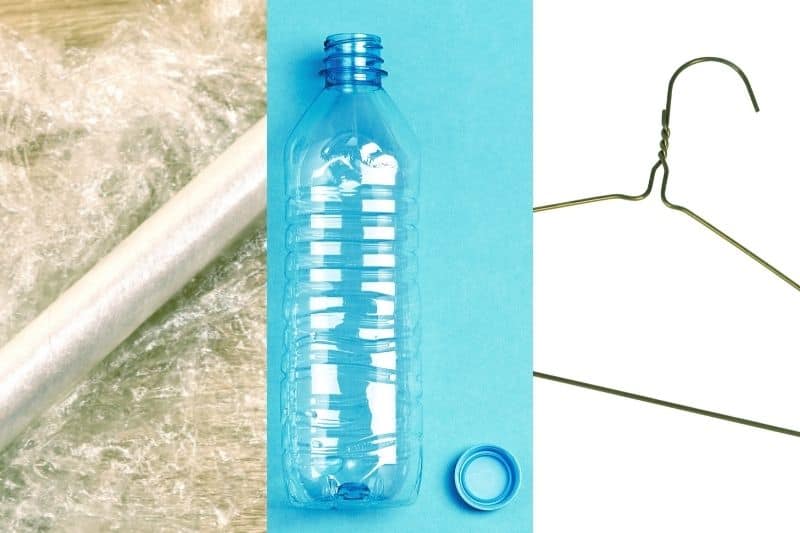
Clingfilm
This method of unblocking a toilet has a very mixed reputation, as it depends entirely on water pressure and the seal that you achieve with the clingfilm. If your home has high water pressure and you achieve a good seal, you do have a higher chance of success with this method.
First, make sure that the surface of the toilet (under the seat) is dry using an old towel, Cover the toilet bowl with at least three layers of clingfilm, making sure that the entire area is covered.
Press the cling film down firmly, and make sure there are no gaps, and the seal is as airtight as possible. If there are gaps, the air will be able to escape, and this technique will not work.
Once you are satisfied the seal is as good as it can be, flush the toilet. The clingfilm should balloon upwards because of the pressure. Carefully push down on the raised clingfilm. This should reverse the suction and push the blockage down into the drain.
Plastic Bottle
This next trick might be a little unpleasant and can even be messy if you are not careful, but it is effective, especially if the toilet bowl is full too.
Before you get started, make sure that you are wearing rubber gloves, old clothes, and cover the floor either with newspaper or any other disposable covering. You will need to empty some of the water out of the toilet for this trick; you can use any container to bail the water out into either a bucket or the sink, but we would recommend using one that can be thrown away once you’re done.
Remove enough water so that you can get your hand into the bowl without water sloshing over the side. Next, cut the bottom off a large plastic bottle.
The neck of the bottle will need to be sealed; if you have the lid still you can use this, or alternatively, put your thumb over the top. If neither of these techniques will work, cover the neck with clingfilm, and fasten it in place with an elastic band. This will create the vacuum that is crucial to this technique working.
Next, push the bottle’s open end into the toilet bowl, and plunge it up and down vigorously. Ensure that it remains under the water during the entire process. This motion will create a vacuum in the pipes that will pull the blockage down into the main drain.
Coat Hanger
This last trick can be nasty depending on exactly what has caused the blockage. This particular trick also has the best chance of success when used in combination with one of the other methods, such as the washing up liquid or water bottle tricks.
Using the two methods in conjunction with one another will help ensure complete removal of the blockage, rather than just poking a hole in it.
Before getting started with this trick, make sure to change into old clothing or disposable overalls, and always wear rubber gloves.
Simply unwind a wire coat hanger until it is straight. Bend one end upwards to form a vague U shape and push this end into the toilet.
Once in place, simply pull and push at the blockage until it breaks up and flows freely into the main drainage system.
Preventing Toilet Blockages
Prevention is better than a cure, and one easy way to do this is to create your own toilet bombs.
To do this, you will need:
- 300 grams of bicarbonate of soda
- 70 grams of citric acid
- A spray bottle of water
- A rubber spatula
- An old ice cube tray
- Optional: essential oils
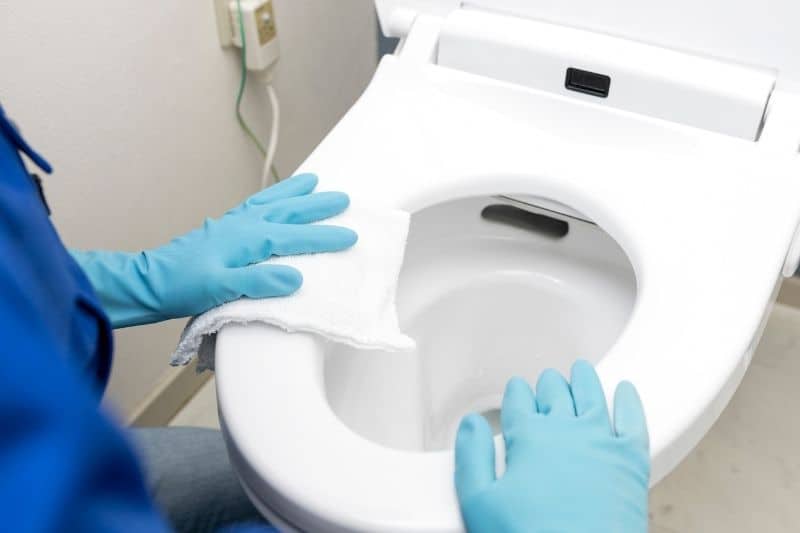
It is recommended that you wear gloves for this process, especially if you have sensitive skin.
First, mix the bicarbonate of soda and citric acid together in a bowl. Mist the powders a couple of times with water, and constantly stir with the spatula until the mixture starts to clump and come together.
You do not need very much water for this; if you notice that it starts to fizz, you have used too much water.
If you are adding essential oils, add them in at this point. Essential oils are not a necessary addition; they simply add a fresh, clean fragrance to the bombs.
Push the mixture into the old ice cube tray and leave overnight to dry thoroughly. Transfer the bombs to a container and leave them in the bathroom. Dropping one or two into the toilet before you go to bed at night will clear any potential blockages before they can develop.
Thirty-something lady with a penchant for flowers and anything involving crafts. I like to clean using environmentally-friendly methods where possible and love sharing my findings, tips and tricks here on In The Wash!
